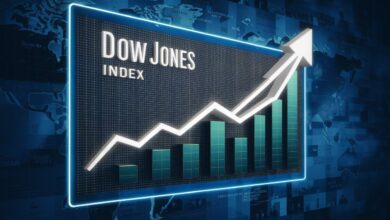Why Is TSLA Stock So Volatile? Understanding the Ups and Downs

Tesla Inc. (TSLA) has been one of the most talked-about stocks in modern history, capturing the attention of investors, analysts, and enthusiasts worldwide. It’s not just the company’s technological breakthroughs or ambitious vision for the future that keeps it in the spotlight—it’s the stock’s wild price swings that leave even seasoned investors on edge.
If you’ve found yourself marveling at TSLA’s unpredictable movements, you’re not alone. This blog will explore the root causes of TSLA stock volatility, examine historical trends, seek expert insights into its future, and provide guidance for navigating Tesla’s turbulence as an investor.
A Spectacular Rise in the Stock Market
Tesla’s stock market story is nothing short of legendary. From its IPO in 2010 at a modest $17 per share to briefly touching over $400 in recent years (adjusted for stock splits), TSLA has delivered exponential returns for those brave enough to ride the wave. The company has become synonymous with innovation. From revolutionizing the electric vehicle (EV) industry to pouring resources into renewable energy and autonomous driving, Tesla has gone beyond being an automaker; it’s a tech company shaping the future.
But that success comes paired with outsized risk. For every sharp rally, there’s been an equally stunning drop, fueled by a mix of optimism, uncertainty, and Elon Musk’s charisma. Why, then, is TSLA stock volatility so pronounced?
What Drives TSLA’s Volatility?
Several key factors contribute to Tesla’s rollercoaster stock performance. These dynamics collectively explain why TSLA is both a darling of growth investors and a nerve-wracking play for conservative portfolios.
1. Market Sentiment and Hype
Tesla isn’t just a car company; it’s a movement. Investors flock to the stock not solely due to financial metrics, but because of their belief in Tesla’s mission to transition the world to sustainable energy. This emotional connection magnifies both positive and negative market sentiment.
When Tesla beats earnings estimates or announces a groundbreaking technology, the stock often surges. Conversely, missed production targets, recalls, or bearish analyst commentary can send shares tumbling. Essentially, emotions and expectations often outweigh fundamentals when it comes to Tesla.
2. Elon Musk’s Influence
Elon Musk is arguably the most influential CEO in the world today. His vision and relentless drive are key reasons behind Tesla’s success, but this influence also introduces unpredictability into the stock price.
For instance, Musk’s tweets have directly impacted TSLA on numerous occasions. A 2018 tweet about taking Tesla private at $420 per share led to regulatory scrutiny and an SEC lawsuit, which Tesla ultimately settled. More recently, his remarks about the global economy, cryptocurrency involvement, and emerging technologies have consistently shaped investor behavior.
Musk’s frequent public appearances and interactions make Tesla’s stock more reactive to news tied to his persona than for most companies.
3. Technological Breakthroughs
Tesla operates at the bleeding edge of innovation. From autonomous driving capabilities to battery technology advancements, these breakthroughs can create massive jumps in stock value—but progress is fraught with risks.
Take Tesla’s Full-Self Driving (FSD) software as an example. While FSD generates excitement and revenue through beta subscriptions, regulatory scrutiny and user criticisms have weighed on market perception. Progress isn’t always linear, and periods of uncertainty can lead to sharp price declines.
4. Competition in the EV Space
Tesla pioneered the EV market, but the playing field has grown. Legacy automakers like Ford and General Motors, alongside new entrants like Rivian and Lucid Motors, have committed billions to developing electric vehicles. Global giants like Volkswagen and Toyota are also ramping up their EV production plans.
This growing competition has sparked debates about Tesla’s ability to maintain its dominant market share. Investors closely watch Tesla’s quarterly delivery numbers to gauge how the company stands amid this intensifying landscape.
5. Regulatory and Macro-Economic Factors
Another layer of uncertainty comes from global regulations and economic headwinds. Changes in government EV subsidies, tariffs, or increased scrutiny on FSD software could impact Tesla’s bottom line.
Additionally, rising interest rates and concerns about an economic slowdown have led to selloffs in high-growth stocks like TSLA, where future projected earnings hold significant weight.

Historical Patterns That Define Tesla’s Stock Swings
Through the years, Tesla’s stock has seen noteworthy events that have shaped its volatility.
- 2013 Rally:
Tesla barely turned a profit in Q1 2013, but the stock jumped over 400% that year. Hype around EV adoption gave bulls the upper hand.
- COVID-19 Boom:
During the pandemic, low interest rates and focus on green initiatives pushed TSLA to record highs, leading to its inclusion in the S&P 500 in December 2020.
- China Expansion:
Tesla’s Gigafactory in Shanghai was initially greeted with bullish optimism, but later beset by market fears regarding geopolitical tensions and rising production costs.
These events highlight a recurring theme in Tesla’s stock history—when the narrative changes, so does the stock price. It’s vital for investors to recognize that volatility isn’t an anomaly; it’s part of the package.
Where Is TSLA Headed? Expert Opinions
While no one knows with certainty how TSLA will behave in the years to come, experts weigh in on some likely scenarios.
- Optimistic View:
Many bullish analysts believe Tesla still has untapped potential. Its leadership in EV battery technology, potential for autonomous ride-sharing networks, and ability to scale to meet global demand make it a prime candidate for growth over the long term.
- Skeptical Predictions:
Other experts caution that Tesla’s valuation is stretched compared to traditional automakers, and any stumble could cause a sharp decline. Skeptics frequently point to increasing competition and the potential for government interventions.
Advice for Investors Navigating TSLA Volatility
Investing in TSLA isn’t for the faint of heart, but it can be rewarding if approached strategically. Here’s how to manage the risk while positioning for potential returns.
- Diversify Your Portfolio:
Don’t put all your eggs in one basket. Mitigate TSLA’s volatility by diversifying into other sectors or safer assets like bonds.
- Use Dollar-Cost Averaging (DCA):
Investing smaller amounts over time can help reduce the impact of market swings.
- Distinguish Noise from Substance:
Not all headlines are actionable. Focus on updates that fundamentally impact Tesla’s business.
- Know Your Risk Tolerance:
Tesla’s volatility isn’t for everyone. Assess your financial goals and risk appetite before committing.
Case Studies of Success and Caution
- Success Story:
An investor who bought TSLA in 2019, held through turbulent times, and avoided panic-selling in early 2020 saw their holdings skyrocket by over 700%.
- Lessons from Losses:
One cautionary tale highlights the perils of margin investing. Some investors over-leveraged their positions in 2022, only to face margin calls during a broad tech selloff.
Understanding these stories can help investors approach TSLA with realistic expectations.
Key Takeaways
Tesla embodies both innovation and unpredictability. While its stock may be one of the most rewarding investments of the decade, it remains one of the most volatile.
By understanding what drives TSLA stock volatility, studying historical trends, and adopting a balanced investment strategy, investors can better position themselves for success.
Want to stay ahead of the curve? Keep tabs on TSLA news, and don’t forget to revisit your portfolio strategy regularly.



